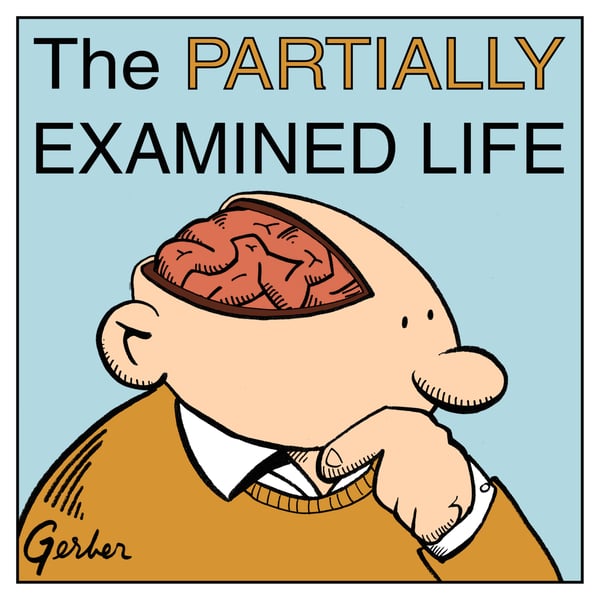Ep. 229: Descartes's Rules for Thinking (Part Three)
The Partially Examined Life Philosophy Podcast
Mark Linsenmayer
4.6 • 2.3K Ratings
🗓️ 18 November 2019
⏱️ 53 minutes
🧾️ Download transcript
Summary
Concluding René Descartes's Rules for Direction of the Mind (1628).
We finish rule 12 through the end, talking about simples, the faculties of intuition and judgment, perception and imagination, necessary vs. contingent truths, and how to do Cartesian science, including what constitutes a "perfectly understood problem."
Start with part one, or get the full, ad-free Citizen Edition. Please support PEL!
End song: "Perfect Design" by Ian Moore, as interviewed on Nakedly Examined Music #94.
Transcript
Click on a timestamp to play from that location
| 0:00.0 | Imagine being transported to Universal Orlando resort. |
| 0:04.7 | Three incredible theme parks, full of twists and turns. You can race alongside raptors on Jurassic World |
| 0:12.1 | Velocicoster, join in a mystery with illuminations minions, and make us flash at Universal volcano bay. |
| 0:20.8 | Book Universal Orlando for 2024 with Virgin Atlantic holidays at your local store on the phone |
| 0:27.3 | or a Virgin Holiday stockcrow.uk. |
| 0:57.3 | This is a section where he starts talking about the three kinds of simple natures. |
| 1:19.1 | There are those things which are said to be simple with respect to our intellect, |
| 1:22.6 | or purely material or common to both. |
| 1:27.8 | Those simple natures which the intellect recognizes by means of a sort of innate light without the aid of any corporeal image are purely intellectual. |
| 1:35.6 | That's where that notion of the first simple nature, the corporeal. |
| 1:41.2 | And then there is those simple natures on the other hand which are recognized to be present only in bodies such as shape, extension, and motion are purely material. |
| 1:50.7 | Lastly, those symbols which are termed common, which are described indifferently now to corporeal things, now to spirits, for instance, |
| 1:58.2 | existence, unity, duration, and the like. |
| 2:00.7 | To this class, we must also refer to those common notions which are as it were links which connect other simple natures together |
| 2:08.0 | and whose self-evidence is the basis for all rational inferences we make. |
| 2:11.8 | The purely intellectual stuff, his examples are doubt, ignorance, the action of the will. |
| 2:19.4 | These are things when you think about them, you don't think about them by imagining something physical. |
| 2:24.7 | They're purely abstract and that's a problem that you have when you start talking about the human subject and let's say, |
| 2:32.4 | faculties of that subject as opposed to the things they're applied to. |
| 2:36.0 | And then there are these higher level categories which span the gap between those to like, you know, existence. |
| 2:42.9 | This reminds me of in our social construction episode, Sirals, distinction between ontological and epistemological objectivity. |
| 2:53.3 | The fact that existence is something that can apply to our thoughts just as much as to things. |
... |
Please login to see the full transcript.
Disclaimer: The podcast and artwork embedded on this page are from Mark Linsenmayer, and are the property of its owner and not affiliated with or endorsed by Tapesearch.
Generated transcripts are the property of Mark Linsenmayer and are distributed freely under the Fair Use doctrine. Transcripts generated by Tapesearch are not guaranteed to be accurate.
Copyright © Tapesearch 2025.

